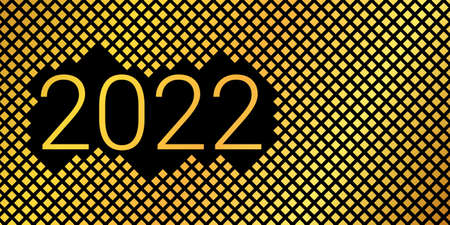Introduction to the Chakra System
The concept of chakras, originating in ancient Indian spiritual traditions, has found a fascinating and enduring place within Western metaphysical practice. At its heart, the chakra system is a framework for understanding the subtle energies that influence both our physical wellbeing and our psychological states. Rooted in Sanskrit, the word “chakra” translates as “wheel,” reflecting the dynamic and cyclical nature of these energy centres. Historically, chakras were first described in early Hindu texts such as the Upanishads and further developed within Buddhist and Tantric philosophies.
As interest in holistic health and alternative spirituality blossomed across Europe and the United Kingdom during the 20th century, the chakra system was gradually woven into the tapestry of Western esoteric thought. Today, it is common to encounter references to chakras within yoga studios, healing practices, and even popular culture throughout Britain. This integration has led to a unique synthesis: while retaining much of their traditional symbolism, chakras are now often explored through lenses familiar to Western sensibilities—such as psychology, personal development, and energy medicine.
This comprehensive guide aims to illuminate the essence of the chakra system as it is understood in contemporary Western metaphysics. We will explore its historical roots, trace its journey into British culture, and clarify how these ancient concepts have been adapted to suit modern perspectives on wellbeing and consciousness.
2. The Seven Main Chakras: Symbols, Colours, and Meanings
In Western metaphysical practice, the chakra system is often approached with a blend of reverence for its Eastern origins and a distinctly Western interpretive lens. Each chakra is perceived as an energy centre within the subtle body, and understanding their unique characteristics can offer valuable insights into one’s physical, emotional, and spiritual well-being. Below, we provide a detailed exploration of the seven main chakras, highlighting their traditional symbols, corresponding colours, and the core qualities associated with each.
| Chakra | Sanskrit Name | Symbol | Colour | Main Qualities |
|---|---|---|---|---|
| Root Chakra | Muladhara | 🔴 Four-petalled lotus | Red | Grounding, security, survival instincts |
| Sacral Chakra | Svadhisthana | 🟠 Six-petalled lotus | Orange | Creativity, sexuality, pleasure |
| Solar Plexus Chakra | Manipura | 🟡 Ten-petalled lotus | Yellow | Personal power, confidence, self-esteem |
| Heart Chakra | Anahata | 🟢 Twelve-petalled lotus | Green | Love, compassion, emotional balance |
| Throat Chakra | Vishuddha | 🔵 Sixteen-petalled lotus | Blue | Communication, truthfulness, self-expression |
| Third Eye Chakra | Ajna | 🟣 Two-petalled lotus (often depicted as an eye) | Indigo | Intuition, insight, imagination |
| Crown Chakra | Sahasrara | 🟤 Thousand-petalled lotus | Purple or White | Spirituality, enlightenment, connection to the divine |
The Root Chakra: Muladhara – Foundation and Security
The Root Chakra sits at the base of the spine and is associated with our sense of safety and grounding in the world. In Western metaphysical circles, it is often linked to practical concerns such as home life and financial stability. Its vibrant red colour symbolises vitality and the will to survive.
The Sacral Chakra: Svadhisthana – Creativity and Sensuality
This chakra governs creative energies and emotional connections. Located in the lower abdomen, it is connected to our capacity for pleasure and our ability to adapt to change. Orange resonates here, reflecting warmth and enthusiasm.
The Solar Plexus Chakra: Manipura – Power and Confidence
The seat of personal power lies in the solar plexus region. Here we find our sense of identity and autonomy. The yellow hue inspires clarity of purpose and encourages self-assurance in daily endeavours.
The Heart Chakra: Anahata – Love and Harmony
Anahata bridges the lower chakras’ physical concerns with the upper chakras’ spiritual aspirations. It is considered the centre of unconditional love in Western traditions—both towards oneself and others—with green signifying healing and renewal.
The Throat Chakra: Vishuddha – Expression and Truth
This chakra supports honest communication and authentic self-expression. When balanced, it allows one to speak with integrity; when blocked, misunderstandings may arise. Blue embodies calmness and depth.
The Third Eye Chakra: Ajna – Intuition and Perception
The Third Eye is celebrated as a source of inner vision and wisdom. In Western metaphysics, it encourages trusting one’s intuition while seeking knowledge beyond material reality. Indigo represents mystery and perception.
The Crown Chakra: Sahasrara – Spiritual Connection
Sahasrara sits at the top of the head and is seen as the gateway to higher consciousness. In contemporary Western thought, it symbolises openness to universal guidance—marked by purple or white for transcendence.
Together these seven chakras form an energetic map that guides seekers on their journey towards holistic well-being. In British metaphysical circles today, they are widely invoked not only for meditation but also for fostering a deeper appreciation of mind-body-spirit harmony within everyday life.

3. Chakra Balancing in Contemporary British Practice
Within the United Kingdom, chakra balancing has woven itself into a rich tapestry of holistic health and spiritual wellbeing. While its roots lie in ancient Indian traditions, the practice has been thoughtfully adapted to resonate with British sensibilities and contemporary lifestyles. Many practitioners across Britain approach chakra work with a blend of reverence for tradition and an openness to modern interpretations, resulting in a unique fusion that honours both heritage and innovation.
Popular Methods for Chakra Balancing
The most common approaches to chakra balancing in the UK include guided meditation sessions, Reiki healing, sound therapy using singing bowls or tuning forks, and aromatherapy with essential oils. Yoga classes, particularly those offered in urban wellness studios from London to Edinburgh, frequently incorporate specific postures and breathwork techniques aimed at stimulating or soothing individual chakras. Additionally, crystal healing—using stones such as amethyst or rose quartz—is often employed to align and energise the body’s energy centres.
Terminology and Language
British practitioners tend to use terminology that reflects both respect for the original Sanskrit names—such as Muladhara (Root), Anahata (Heart), and Sahasrara (Crown)—and their English translations. There is a certain clarity and inclusiveness in the language, making chakra concepts accessible to those unfamiliar with Eastern philosophies. Terms like ‘energy alignment’, ‘grounding’, and ‘balancing’ are commonly used in workshops and wellness literature throughout the UK.
Cultural Adaptations and Community Practice
Chakra balancing in Britain often takes place within group settings, such as community centres or local retreats, fostering a sense of collective harmony. Practitioners may blend mindfulness traditions with distinctly British touches—like guided visualisations set amidst familiar countryside landscapes or references to seasonal rhythms observed across the UK. In keeping with the traditional British values of discretion and modesty, chakra sessions are typically conducted with a gentle, non-intrusive approach, focusing on personal comfort and emotional safety.
This thoughtful adaptation ensures that chakra balancing not only honours its origins but also becomes an integrated aspect of modern British metaphysical practice, offering individuals from all walks of life an opportunity for self-discovery and inner equilibrium.
4. Common Misconceptions and Modern Interpretations
In the realm of Western metaphysical practice, particularly within British circles, the chakra system is often subject to a number of misconceptions. Many newcomers believe the chakras to be strictly Eastern constructs, rigidly defined and static in nature. However, as contemporary British metaphysical communities have adopted and adapted these concepts, both misunderstandings and new interpretations have flourished.
Misconceptions Surrounding Chakras
A prevailing misunderstanding is that chakras are solely physical entities that can be measured or seen with the naked eye. In truth, chakras are subtle energy centres, not anatomical organs. Another common myth is that all chakra systems are identical; yet, various traditions (Hindu, Buddhist, New Age) describe different numbers and locations of chakras. Additionally, some believe that achieving “perfect” chakra balance is essential for happiness or health, whereas most seasoned practitioners see this balance as fluid and evolving with ones life circumstances.
| Misconception | Clarification |
|---|---|
| Chakras are physical objects | Chakras are understood as energetic or symbolic centres rather than anatomical features |
| There is only one chakra system | Multiple traditions offer varied models; no single system prevails universally |
| All chakras must be perfectly balanced at all times | Balance is dynamic and contextual; minor imbalances are normal parts of life |
Modern British Interpretations
The modern British approach to chakras often weaves together elements from traditional Eastern philosophies and local spiritual sensibilities. Rather than adhering strictly to historical texts, British metaphysical practitioners commonly reinterpret the chakras in ways that resonate with their own experiences and community needs. For example, some incorporate Celtic symbolism or work with colour therapy unique to Western traditions.
Integration with Contemporary Practices
Many within British metaphysical circles blend chakra work with mindfulness practices, psychotherapy, and holistic therapies such as Reiki or reflexology. This fusion reflects a broader cultural emphasis on pragmatism—embracing what works for wellbeing without strict dogma.
The Evolving Understanding
The chakra system in Britain today serves less as an exotic import and more as a living framework for personal growth. As perspectives continue to shift, community dialogue remains open to questioning old assumptions while welcoming new insights from diverse backgrounds.
5. Integrating Chakra Work into Daily Life
Chakra work need not be confined to meditation cushions or spiritual retreats; in fact, it can be seamlessly woven into the fabric of everyday life, especially within the context of modern British living. Incorporating chakra-focused practices offers a gentle yet profound way to nurture one’s wellbeing and spiritual growth. Below, we explore practical strategies tailored for those seeking to harmonise Eastern wisdom with Western lifestyles.
Mindful Morning Rituals
Begin your day with intentionality by setting aside a few moments each morning for grounding and alignment. British mornings are often brisk and bustling, but even a brief visualisation—imagining each chakra as a spinning wheel of light—can foster clarity and focus. Enjoying a cup of tea while silently affirming strength (root chakra) or creativity (sacral chakra) sets a positive tone for the day ahead.
Incorporating Chakra Awareness at Work
Workplaces across the UK are becoming more mindful of holistic wellbeing. Carry a small crystal associated with a specific chakra in your pocket, or discreetly practise breathing exercises during breaks. For instance, deep, steady breaths help balance the solar plexus chakra, supporting confidence before presentations or meetings.
Nourishing Through Food and Nature
The British love for wholesome food and outdoor walks can be channelled into chakra care. Eating colourful fruits and vegetables supports different chakras: vibrant root vegetables for grounding or leafy greens for heart-centred energy. Take regular walks through local parks or countryside, consciously connecting with nature to revitalise your energy centres.
Evening Reflection and Relaxation
As twilight settles over the city or village, evenings are ideal for gentle self-reflection. Journalling about your emotional state can reveal which chakras may need attention. Listening to calming music or practising restorative yoga postures can soothe the nervous system and promote harmony among all seven chakras.
Cultivating Community Connection
The British sense of community—be it through neighbourhood gatherings or shared interests—mirrors the interconnectedness of the chakra system itself. Consider joining local meditation groups, holistic workshops, or online forums where experiences and insights about chakra work can be exchanged in a supportive environment.
By weaving these simple yet meaningful practices into daily routines, individuals across Britain can honour their unique heritage while embracing global metaphysical traditions. This balanced approach fosters resilience, insight, and spiritual vitality in the midst of contemporary life.
6. Resources and Further Learning
For those inspired to deepen their understanding of the chakras within the context of Western metaphysical practice, the United Kingdom offers a rich tapestry of resources. Whether you are beginning your journey or seeking advanced study, there are books, groups, and courses tailored to varying interests and levels of experience.
Recommended Reading
Several well-regarded books provide a solid foundation in chakra theory as interpreted through Western perspectives. Titles such as “Wheels of Life” by Anodea Judith and “The Book of Chakra Healing” by Liz Simpson offer accessible insights suitable for both newcomers and seasoned practitioners. For those interested in blending traditional wisdom with contemporary Western thought, “Chakra Meditation” by Swami Saradananda, a UK-based author, presents practical techniques grounded in British holistic traditions.
Local Study Groups and Communities
The UK boasts a vibrant network of metaphysical and spiritual groups that regularly explore chakra work. Organisations such as The College of Psychic Studies in London frequently host talks and workshops dedicated to energy centres and holistic healing. Meetup platforms also feature numerous local groups across cities like Manchester, Bristol, and Edinburgh where members gather to practise meditation, discuss literature, and share personal experiences in a supportive setting.
Courses and Workshops Across the UK
If you prefer structured learning, many holistic centres offer both in-person and online courses on chakra understanding. The School of Intuitive Arts in Brighton provides weekend intensives focusing on chakra alignment within Western frameworks. Additionally, renowned retreat centres such as Glastonbury’s Chalice Well Trust run regular events delving into energy healing and self-discovery through the chakra system. Universities with adult education programmes occasionally include modules exploring esoteric studies, providing an academic perspective for those wishing to ground their metaphysical interests in scholarly research.
Further Exploration Online
For ongoing development, reputable websites like The British Wheel of Yoga offer webinars on chakra philosophy relevant to both yoga practitioners and those simply wishing to incorporate these concepts into daily life. Social media platforms can also connect you with UK-based teachers and communities sharing resources tailored specifically to local cultural sensibilities.
Embracing these resources will not only expand your knowledge but also foster connections with like-minded individuals who share a passion for understanding the chakras through the lens of Western metaphysical tradition.


